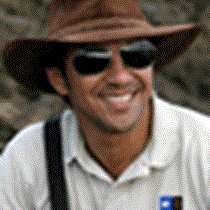Isabela & Fernandina Islands
Our morning started off with navigation along the coastline of Northern Isabela; this is a relatively pristine, beautiful area that always holds high probabilities to find any kind of marine mammals. The sun was out but not quite visible, since an unexpected (at least for this time of the year) cloudy sky accompanied us during our searching. A fairly large group of guests helped us during the searching; giving up their warm beds early in the morning had to have a reward, and what a better one than more that eight hundred dolphins and over four hundred pilot whales! We had enough whales and dolphins to share, so we made a general call for everyone to see these magnificent creatures. The sounds of clicks from cameras and wow’s from guests was overwhelming, but even more overwhelming was the amount of dolphins and whales surrounding the ship, literally everywhere!
After satisfying our hungry cameras with as many pictures a memory card could hold, we continued with our navigation south to cross the equator line. We did all become officially “shellbacks,” as this is the official nautical term used by sailors for everyone who crosses the equator line on board a ship.
Later on we jumped on the Zodiacs and explored the southern rim of Ecuador volcano, and were tremendously impressed by not only its beauty, but the amount of wildlife concentrated in its shorelines. Hundreds of marine iguanas, blue-footed and Nazca boobies, sea lions, penguins and flightless cormorants were among some of the species found along the way, and that is not even counting the underwater species that we encountered when we later snorkeled on a beautiful bay off the island.
We dedicated the afternoon to explore an island fairly new on this planet, Fernandina. With only three hundred thousand years, Fernandina is our “baby” island, and among one of the most volcanically active areas in the whole archipelago. An imposing volcano was our companion during the whole afternoon, as we strolled along the black lava shorelines observing sea lions, colonies of iguanas and the pristine environment that surrounded us.
Our morning started off with navigation along the coastline of Northern Isabela; this is a relatively pristine, beautiful area that always holds high probabilities to find any kind of marine mammals. The sun was out but not quite visible, since an unexpected (at least for this time of the year) cloudy sky accompanied us during our searching. A fairly large group of guests helped us during the searching; giving up their warm beds early in the morning had to have a reward, and what a better one than more that eight hundred dolphins and over four hundred pilot whales! We had enough whales and dolphins to share, so we made a general call for everyone to see these magnificent creatures. The sounds of clicks from cameras and wow’s from guests was overwhelming, but even more overwhelming was the amount of dolphins and whales surrounding the ship, literally everywhere!
After satisfying our hungry cameras with as many pictures a memory card could hold, we continued with our navigation south to cross the equator line. We did all become officially “shellbacks,” as this is the official nautical term used by sailors for everyone who crosses the equator line on board a ship.
Later on we jumped on the Zodiacs and explored the southern rim of Ecuador volcano, and were tremendously impressed by not only its beauty, but the amount of wildlife concentrated in its shorelines. Hundreds of marine iguanas, blue-footed and Nazca boobies, sea lions, penguins and flightless cormorants were among some of the species found along the way, and that is not even counting the underwater species that we encountered when we later snorkeled on a beautiful bay off the island.
We dedicated the afternoon to explore an island fairly new on this planet, Fernandina. With only three hundred thousand years, Fernandina is our “baby” island, and among one of the most volcanically active areas in the whole archipelago. An imposing volcano was our companion during the whole afternoon, as we strolled along the black lava shorelines observing sea lions, colonies of iguanas and the pristine environment that surrounded us.



